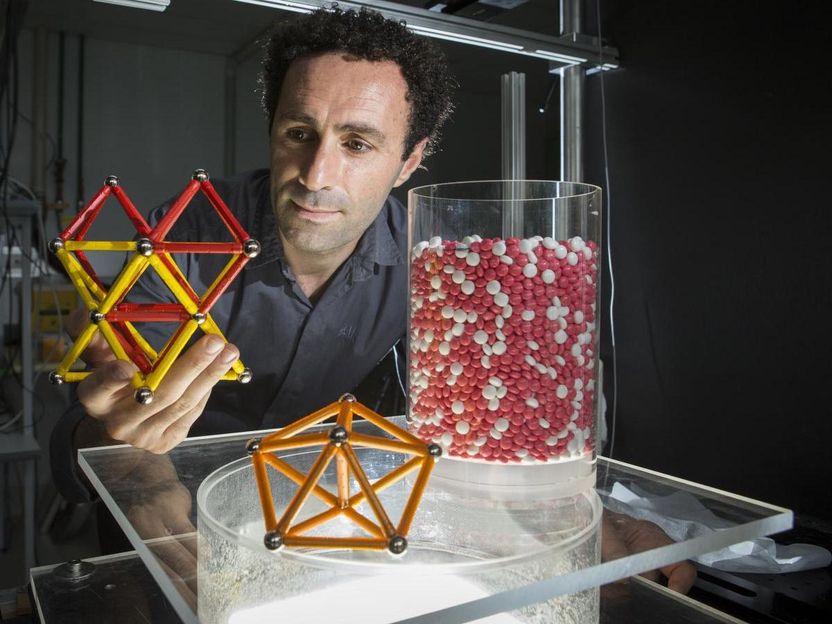A way to pack grains and drugs most efficiently
Scientists have discovered a way to solve a problem that has baffled humans for so long it is mentioned in the Bible: achieving the most efficient packing of objects such as grains and pharmaceutical drugs.

This is Dr Mohammad Saadatfar from the ANU Research School of Physics and Engineering.
Stuart Hay, ANU.
Lead researcher Dr Mohammad Saadatfar from The Australian National University (ANU) said the knowledge could be vital for building skyscrapers on sand, understanding how grains were stored in silos, or how drugs were packed and delivered to specific targets in the body.
"It's crazy - sand is one of the most common building materials in the world and drugs are often packed in the forms of pills, but we really don't understand how assembly of grains or pills behave," said Dr Saadatfar from the ANU Research School of Physics and Engineering.
The international team of physicists and mathematicians used high-resolution CT scans to reveal how spherical particles in a disordered arrangement settle and compact themselves into ordered patterns.
"Now we believe that we have uncovered the mechanisms underlying the transition from disordered packing of grains to ordered structures," he said.
"Whenever spheres - such as soccer balls, ball bearings or atoms - are packed into a space, the most efficient packing is in a very ordered pattern, known as face-centred cubic.
"Sodium and chloride atoms in salt crystals are also arranged and ordered that way."
When organised that way, the spheres had a minimum of gaps between them, taking up just over 74 per cent of the space, Dr Saadatfar said.
"However, when settling quickly, spheres don't naturally form that arrangement, reaching only 64 per cent at best, an arrangement known as random closed packing," he said.
The team had previously shown that the 64 per cent packing is not a random arrangement. In fact, spheres tend to form into tightly-held arrangements of tetrahedra self-organised in rings of five.
"For a long time, scientists thought that packing spheres more efficiently was impossible to occur naturally and extremely difficult to observe in the lab," Dr Saadatfar said.
"That's because it's hard to move to the perfectly ordered structure. It requires breaking the disordered patterns that developed naturally and that are mechanically robust.
"You need to add just the right amount of energy for that - too little energy and the packing remains disordered, too much, the crystal will not form either."
Dr Saadatfar said the transition to a tighter packing arrangement was mentioned in the Bible.
"Luke 6:38 states 'A good measure, pressed down, shaken together and running over, will be poured into your lap. For with the measure you use, it will be measured to you.' It mentions all the experimental protocols that we used in lab - pressing down, shaking, pouring," Dr Saadatfar said.
"I'm not sure the authors of the Bible had nailed the mathematical basis of it."
The team used the relatively new field of mathematics known as homology to interpret 3D x-ray microscope images and large-scale computer simulations.
Dr Saadatfar said for different particle shapes, the mathematics became much more complex.
"When you look at footballs or M&Ms we've got a lot of work to do," Dr Saadatfar said.
"I'll be keeping my department supplied with M&Ms for the next few years."





























































